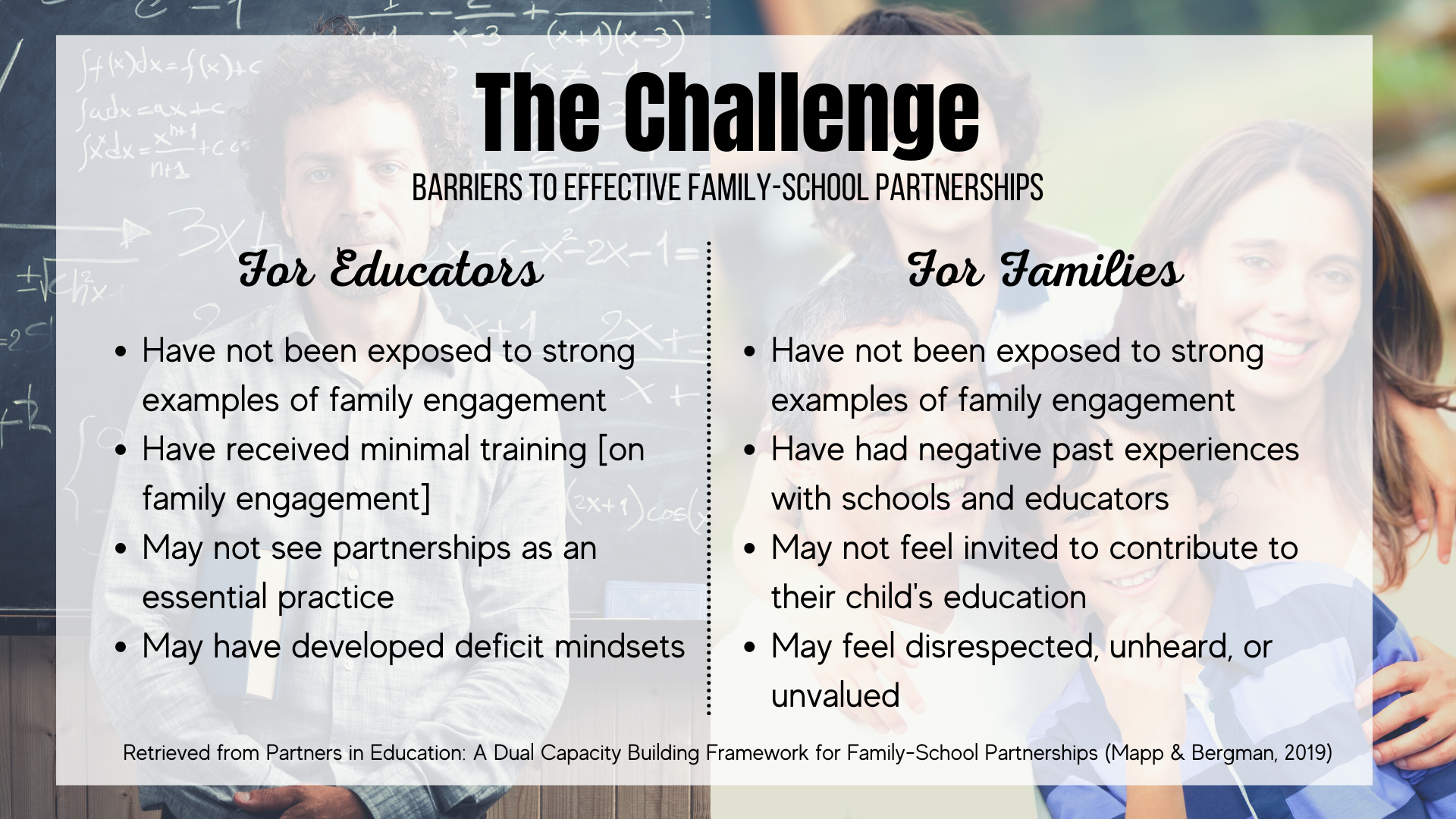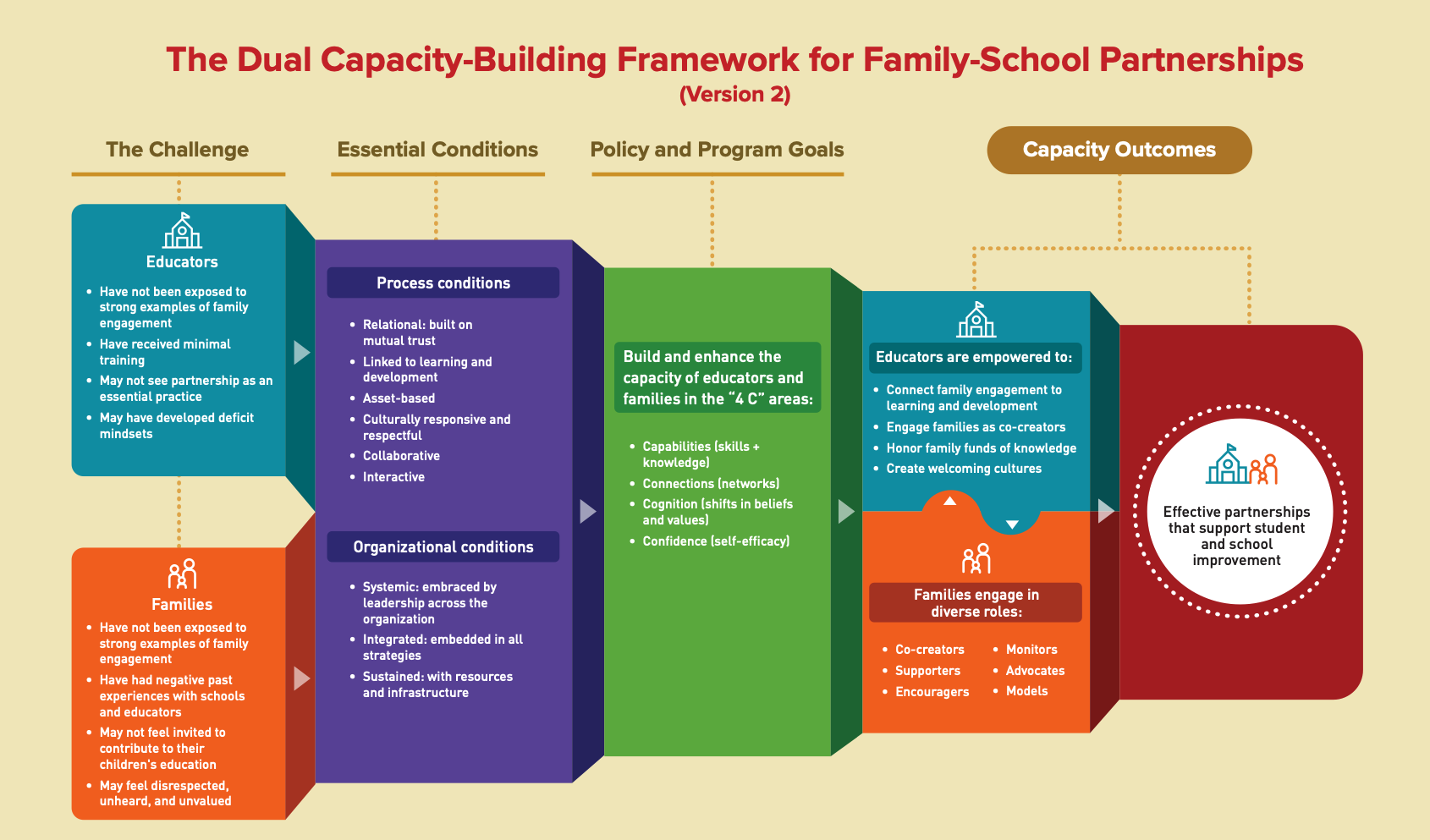Family Engagement: The Challenge
We know from decades of research that family-school partnerships are linked to improved indicators of student achievement. Family roles are tied to grades, test scores, lower drop-out rates, and students' beliefs about the importance of learning. "Given this research base, the increase in policies promoting family engagement is a sign of progress toward improving educational opportunities for all children. Yet these mandates are often predicated on a fundamental assumption: that the educators and families charged with developing effective partnerships between home and school already possess the requisite skills, knowledge, confidence, and belief systems—in other words, the collective capacity—to successfully implement and sustain these important home–school relationships. Unfortunately, this assumption is deeply flawed" (p. 5, Mapp & Kuttner, 2013).
Understanding the Challenge
To build effective partnerships that support student and school improvement, we must first understand why effective partnerships do not materialize. The challenge lies in the lack of skills required to work as partners. However, the challenge is dual in nature – both schools and families must have the collective capacity to engage effectively. According to the Dual Capacity-Building Framework for Family-School Partnerships (Version 2)2, the challenge is two-fold.

Access Text-Only Version of the Challenge Graphic
How does MTSS align with the Dual Capacity-Building Framework?
- Both frameworks are focused on student and school improvement. The goal of the Dual Capacity-Building Framework is to create effective partnerships that support student and school success.
- Both frameworks rely on an asset-based lens: differences among students and families are seen as strengths. "School and district staff need to be knowledgeable about the assets and funds of knowledge available in the communities where they work" (p. 10, Mapp & Kuttner, 2013).
- Both provide structures to support improvement: evidence-based, culturally and linguistically responsive practices; data-driven goal setting; and systemic support from leadership to ensure adults can be effective.
How do both frameworks support schools and families in building capacity?
- MTSS promotes shared responsibility for student and school success. The Dual Capacity-Building Framework also emphasizes shared responsibility – family engagement is everyone's responsibility. Student improvement is a shared goal for both families and educators.

Overview
Return to the Family Engagement Overview page for a high-level refresher on the Dual Capacity-Building Framework.
Overview
Essential Conditions
Review the Essential Conditions needed for effective family-school partnerships and how MTSS aligns with the Dual Capacity-Building Framework.
Essential Conditions
The Framework
Learn more about The Challenge within the Dual Capacity-Building Framework for Family-School Partnerships.
The Framework1 United States Department of Education. Mapp, K. L., & Kuttner, P. J. (2013). Partners in Education: A Dual Capacity-Building Framework for Family-School Partnerships. Available from https://www2.ed.gov/documents/family-community/partners-education.pdf; accessed 10 February 2021.
2 Mapp, K.L. & Bergman, E. (2019). Dual capacity-building framework for family-school partnerships (Version 2). Available at www.dualcapacity.org.
